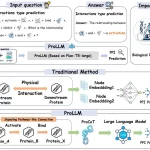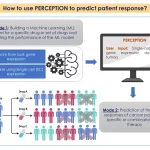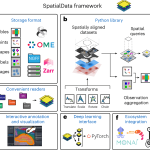A groundbreaking study conducted by scientists from MIT and McMaster University has unveiled a revolutionary artificial intelligence-based antibiotic that effectively eliminates a specific strain of bacteria often associated with drug-resistant infections. If it receives approval for patient usage, the newly developed antibiotic has the potential to significantly contribute to the battle against Acinetobacter baumannii, a bacterial strain frequently encountered within healthcare facilities.
Acinetobacter baumannii is known for its ability to induce serious infections like pneumonia and meningitis, making it a formidable adversary. Furthermore, it is noteworthy to mention that this microbe also contributes significantly to infections among injured soldiers in Iraq and Afghanistan. This article examines how cutting-edge research and AI algorithms are transforming drug discovery and providing encouragement in the fight against antibiotic resistance.
The Challenge of Antibiotic Resistance
As bacteria evolve and develop strategies to dodge the effects of existing medicines, the growth of antibiotic resistance has become a global health concern. Regrettably, new antibiotic development has not kept pace with the growth of resistant bacteria. Recognizing this urgent need, the research team at MIT and McMaster University sought to leverage AI technology to expedite the discovery of novel antibiotics.
AI’s Role in Antibiotic Discovery
The researchers utilized a machine-learning model to screen a library of approximately 7,000 chemical compounds, evaluating their potential effectiveness against A. baumannii. This AI algorithm was trained to recognize patterns associated with inhibiting the growth of the bacterium, offering a powerful tool for identifying promising drug candidates.
To train the AI algorithm, the team exposed A. baumannii to thousands of different compounds, observing which ones effectively inhibited bacterial growth. The structure of each compound was inputted into the model alongside information regarding its inhibitory activity. By assimilating this data, the algorithm learned to identify chemical features associated with growth inhibition, laying the foundation for subsequent analysis.
Discovery of a Promising Antibiotic
After training the model, the researchers employed it to analyze a set of 6,680 compounds not previously seen by the algorithm. In under two hours, the AI algorithm identified several hundred top hits, among which the team selected 240 compounds for experimental testing. Emphasizing compounds with distinct structures from existing antibiotics, they discovered nine potential antibiotics, with one exhibiting exceptional potency against A. baumannii.
The identified compound, named abaucin, demonstrated a remarkable ability to selectively target and eliminate A. baumannii while leaving other bacteria species unaffected. This narrow spectrum of action reduces the risk of rapid resistance development and preserves beneficial gut bacteria, which play a critical role in maintaining overall health. These characteristics make abaucin a promising candidate for further development.
Through comprehensive studies on abaucin, the researchers unraveled its unique mechanism of action. The antibiotic interferes with lipoprotein trafficking, a process involved in protein transport within cells. Specifically, it inhibits the activity of LolE, a protein essential to this process. Intriguingly, while all Gram-negative bacteria express LolE, abaucin exhibited selectivity for A. baumannii. The team hypothesizes that slight variations in the bacterium’s lipoprotein trafficking mechanism contribute to the antibiotic’s specific action.
In vivo Efficacy and Future Prospects
To assess the therapeutic potential of abaucin, the researchers conducted experiments on mice, successfully treating A. baumannii wound infections. Furthermore, lab tests using drug-resistant strains isolated from human patients validated its efficacy. Moving forward, the research team plans to optimize abaucin’s medicinal properties in collaboration with McMaster University, with the ultimate goal of developing it for clinical use.
Expanding the Scope of AI-Driven Discovery
The researchers will use this computational framework to look for possible treatments for other infections caused by drug-resistant Staphylococcus aureus and Pseudomonas aeruginosa. Researchers can speed up the drug discovery process and meet the urgent need for new antibiotics by leveraging the capabilities of AI.
Conclusion
The advent of AI algorithms in antibiotic discovery represents a remarkable leap forward in the battle against drug-resistant infections. Researchers have successfully identified a potent antibiotic capable of combating Acinetobacter baumannii by leveraging machine learning and innovative research methodologies. This breakthrough discovery paves the way for further advancements in the field, offering hope in the race against antibiotic resistance. With continued research and collaboration, AI-powered drug discovery holds immense promise in the quest to safeguard public health.
Article Source: Reference Paper | Reference Article
Learn More:
Dr. Tamanna Anwar is a Scientist and Co-founder of the Centre of Bioinformatics Research and Technology (CBIRT). She is a passionate bioinformatics scientist and a visionary entrepreneur. Dr. Tamanna has worked as a Young Scientist at Jawaharlal Nehru University, New Delhi. She has also worked as a Postdoctoral Fellow at the University of Saskatchewan, Canada. She has several scientific research publications in high-impact research journals. Her latest endeavor is the development of a platform that acts as a one-stop solution for all bioinformatics related information as well as developing a bioinformatics news portal to report cutting-edge bioinformatics breakthroughs.









